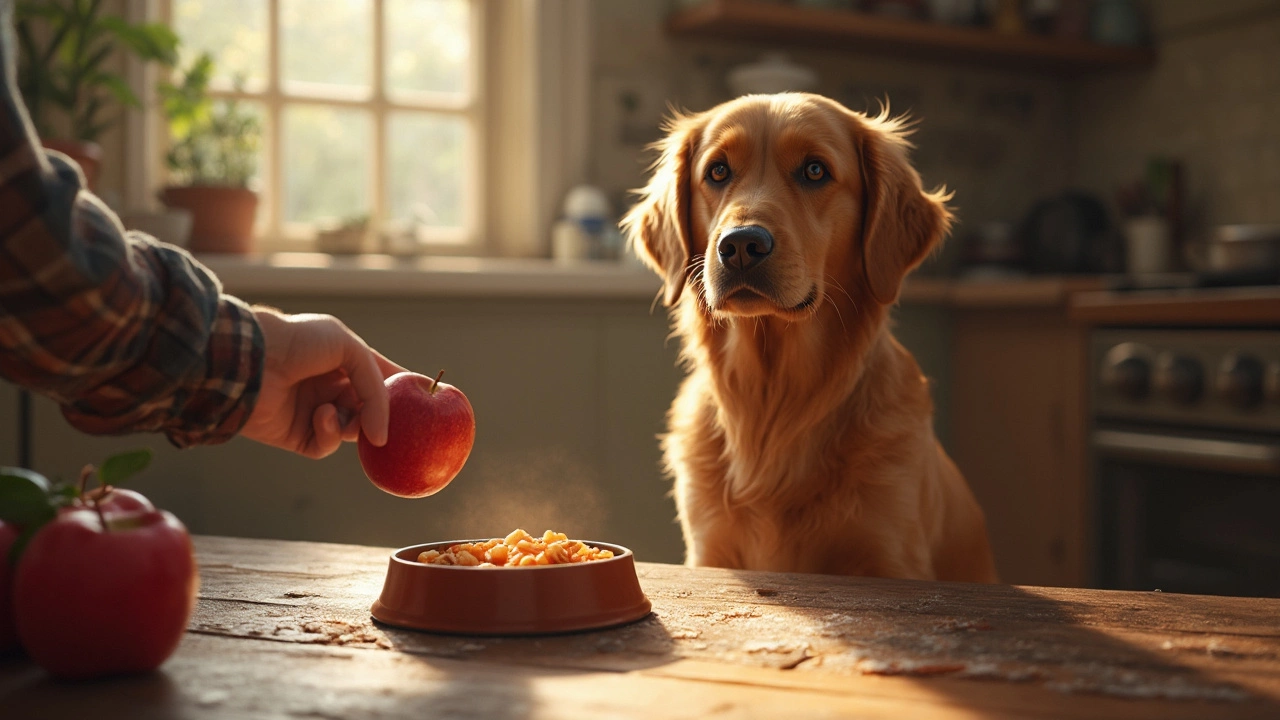Applesauce: What It Is and How to Use It Safely for Your Pets
If you ever wondered whether a spoonful of applesauce is okay for your dog or cat, you’re not alone. Many owners reach for a quick snack that looks harmless, but the truth is a bit more nuanced. Applesauce can be a tasty, low‑calorie option when you choose the right product and feed it in the right amount.
First off, not all applesauce is created equal. The best choice is plain, unsweetened applesauce with no added sugar, salt, or artificial flavors. Those extra ingredients can upset a pet’s stomach or lead to weight gain over time. If you make applesauce at home, just steam or bake apples, mash them, and skip the sweeteners.
Why Applesauce Can Be a Good Treat
Apples themselves are a great source of fiber, vitamin C, and antioxidants. When you strip them down to plain applesauce, you keep most of those benefits while making the texture easy for a dog or cat to chew. The fiber can help with digestion, especially for older dogs who might need a gentle boost.
Another perk is the low calorie count. One tablespoon of plain applesauce has roughly 10‑15 calories, so it’s a safe way to add a little variety without blowing your pet’s daily calorie budget. This makes it useful for training treats or for hiding medication.
That said, moderation is key. Even the healthiest treat can become a problem if you overdo it. A general rule of thumb is to keep treats under 10% of your pet’s total daily calories. For a medium‑size dog, that’s about a teaspoon or two a day.
How to Serve Applesauce to Dogs and Cats
Start small. Offer a tiny dab on your finger and watch for any signs of upset stomach, such as vomiting or diarrhea. If your pet handles it well, you can mix a spoonful into their regular food or use it as a lickable treat in a puzzle toy.
For cats, the situation is a bit different. Some cats enjoy the sweet taste, but many are indifferent. If you decide to give a cat applesauce, stick to the tiniest amount—just a lick—because cats are obligate carnivores and don’t need fruit in their diet.
Always store opened jars in the fridge and discard any leftovers after a few days. Freshness matters, and a sour smell is a clear sign it’s gone bad.
Remember that applesauce is not a replacement for a balanced diet. It should only complement high‑quality pet food. If your dog has diabetes, a history of pancreatitis, or any food allergies, check with your vet before adding any new treat.
In short, plain, unsweetened applesauce can be a safe, low‑calorie snack that adds a bit of variety to your pet’s meals. Choose the right product, keep portions tiny, and watch your pet’s reaction. When you follow these simple steps, you’ll have a handy, dog‑approved treat that’s both tasty and easy to prepare. Happy feeding!
- Morgan Ainsworth
- 0 Comments
Is It Okay to Give Your Dog Applesauce?
Considering giving your dog applesauce can sound like a tasty idea, but is it safe and healthy? This article digs into the nutritional aspects of applesauce for dogs, weighing the pros and cons. Find out if applesauce can be a sweet treat or just unnecessary sugar for your furry friend. Discover tips on how to offer it safely and know what to watch out for. Ensure your dog's diet remains balanced while bringing some variety.
View More
